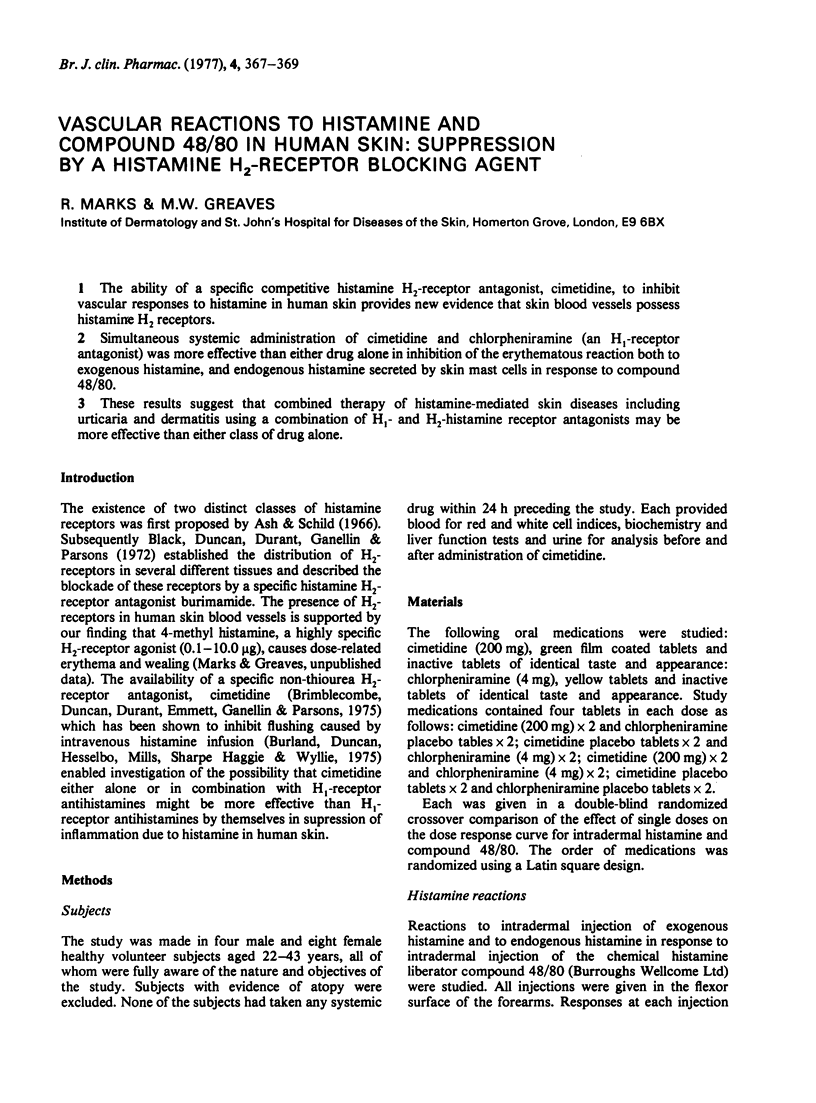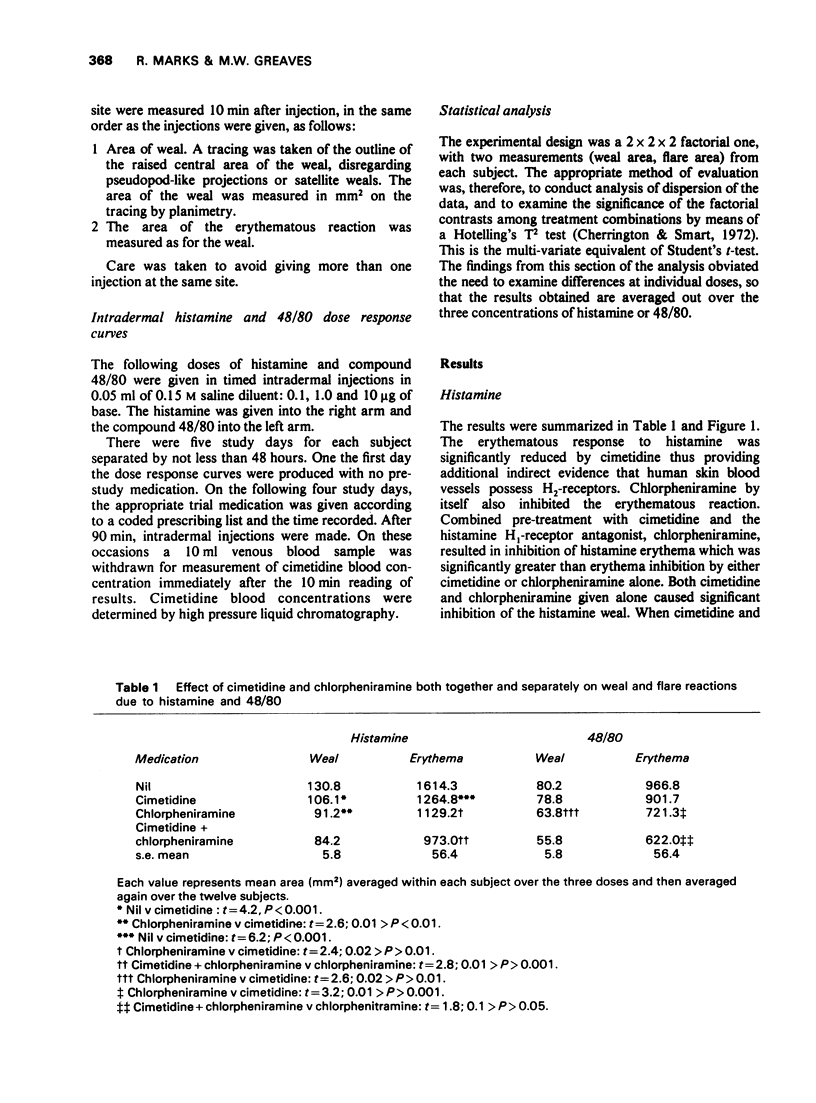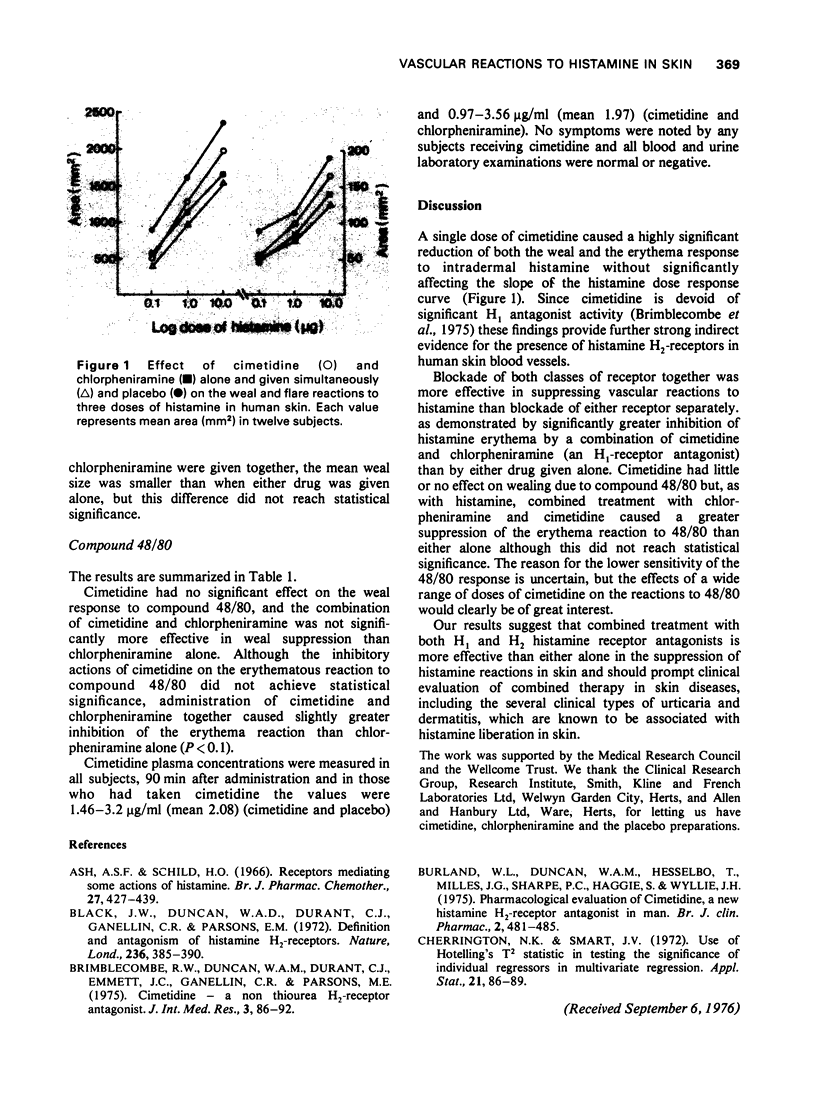Abstract
1 The ability of a specific competitive histamine H2-receptor antagonist, cimetidine, to inhibit vascular responses to histamine in human skin provides new evidence that skin blood vessels possess histamine H2 receptors. 2 Simultaneous systemic administration of cimetidine and chlorpheniramine (an H1-receptor antagonist) was more effective than either drug alone in inhibition of the erythematous reaction both to exogenous histamine, and endogenous histamine secreted by skin mast cells in response to compound 48/80. 3 These results suggest that combined therapy of histamine-mediated skin diseases included urticaria and dermatitis using a combination of H1- and H2-histamine receptor antagonists may be more effective than either class of drug alone.
Full text
PDF


Selected References
These references are in PubMed. This may not be the complete list of references from this article.
- Ash A. S., Schild H. O. Receptors mediating some actions of histamine. Br J Pharmacol Chemother. 1966 Aug;27(2):427–439. doi: 10.1111/j.1476-5381.1966.tb01674.x. [DOI] [PMC free article] [PubMed] [Google Scholar]
- Black J. W., Duncan W. A., Durant C. J., Ganellin C. R., Parsons E. M. Definition and antagonism of histamine H 2 -receptors. Nature. 1972 Apr 21;236(5347):385–390. doi: 10.1038/236385a0. [DOI] [PubMed] [Google Scholar]
- Burland W. L., Duncan W. A., Hesselbo T., Mills J. G., Sharpe P. C., Haggie S. J., Wyllie J. H. Pharmacological evaluation of cimetidine, a new histamine H2-receptor antagonist, in healthy man. Br J Clin Pharmacol. 1975 Dec;2(6):481–486. doi: 10.1111/j.1365-2125.1975.tb00564.x. [DOI] [PMC free article] [PubMed] [Google Scholar]


